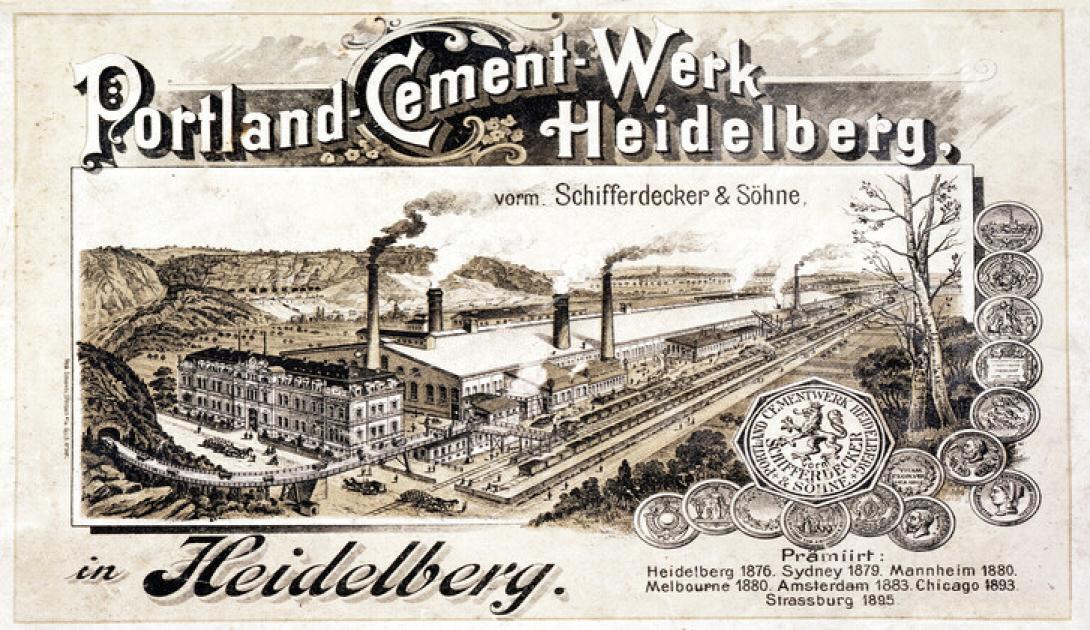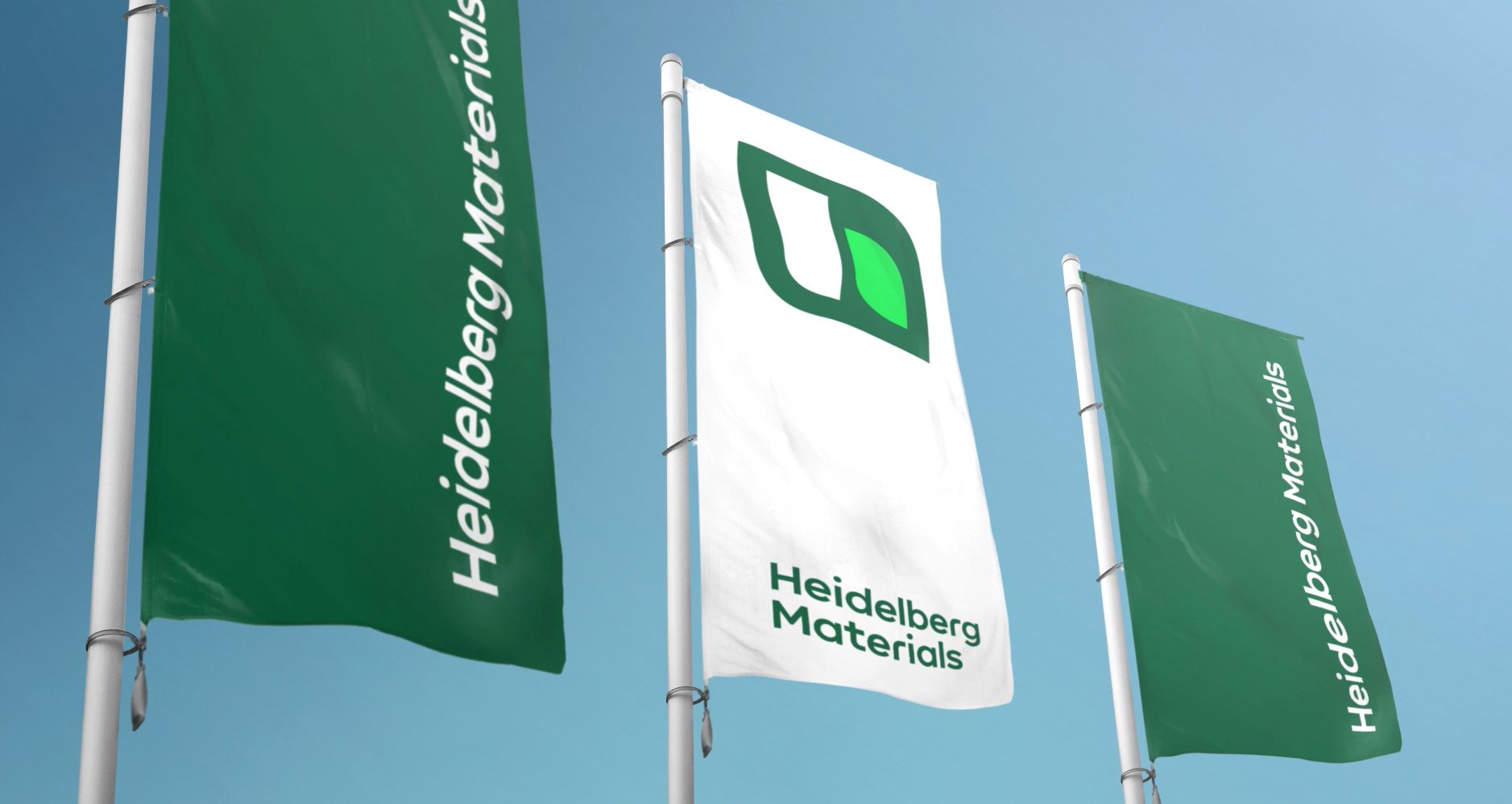125 years of the Leimen cement plant
From disaster to a new start
After only 22 years of existence, the former Portland Cement Work in Heidelberg (predecessor of Heidelberg Materials) suffered a severe setback in 1895: The plant, located in the Bergheim district, burned to the ground.
Originally, the idea was to rebuild the plant at the old location. However, the city of Heidelberg refused to reconstruct it and bought the land. As a consequence, according to a source close to the time, the company had to "give in to the demands of the city authorities and the government and move its operation, which was detrimental to the scenic beauty of Heidelberg, to Leimen […]."
The largest cement plant of the German Empire
After a construction period of only one year and six months, the largest cement plant in the entire German Empire was finally built in Leimen in 1896. The entire machinery was housed under a 485 m long and 60 m wide factory hall made of concrete and steel structures. This made it possible to automate the flow of materials to an even greater extent, while largely avoiding manual labour.
The fresh start in Leimen also resulted in a geographical advantage, as the shell limestone quarries needed for cement production were now in the immediate vicinity. Using completely newly developed machines, the Leimen plant also had an enormous production capacity, which surpassed other cement plants at the time. With the help of technical innovations under the plant manager and chemist Friedrich Schott, the factory survived numerous price wars on the cement market. While these times of crisis meant the downfall of some plants, the Leimen location, on the other hand, proved to be resistant and developed into the company's main plant. In 1898, shortly after reconstruction, it was already able to record cement shipments of 700,000 barrels, which corresponds to around 126,000 tonnes.
Leimen as a hotbed of innovation
The continuous technical evolution of the plant established the earning power for the following expansion steps. Several takeovers, e.g. of the Nürtingen Portland Cement Factory, M. Lude & Co. in 1899 and the merger with the Mannheim Portland Cement Factory in 1901, were made possible by this. Within the next six years, four additional plants were also brought into the company's ownership.
In 1902, the newly introduced rotary kilns made a major contribution to significantly improved kiln efficiencies, and improved automation processes ensured production flows with a reduced need for human manual labour. New mining methods, such as the roll-hole operation, were exported from the Leimen quarry to the other plants.
For some future managers in the cement industry, the Leimen location served as a talent factory, especially under the strict direction of the plant managers Friedrich Schott and Dr. Ehrhart Schott.
In the first half of the 20th century, the factory managed to maintain its dominant position within the market. After the end of the Second World War, however, further factory expansion initially lagged behind the competition. Nevertheless, Leimen still proved to be a central trailblazer in terms of technological development. The plant showed itself to be a leader, especially in bulk loading and dust removal systems for the exhaust gas streams. After the quarries in the immediate vicinity of the factory were abandoned in the 1960s, the company faced higher costs. The maintenance of the 5.5 km long material ropeway between the factory building and the quarry in Nußloch took a not inconsiderable financial toll.
However, the continuous rise and economic success of the Leimen cement plant was not shattered by this. The constant technological optimisation and the dedication of the employees formed the robust backbone of the plant. One of these innovations was the use of a new filtering technology, which was able to separate 99.5% of the dust. This meant that the time of roofs covered in white dust was over in Leimen. Not only environmental but also impressive economic successes were recorded: As early as 1964, the Leimen plant shipped a considerable amount of 1 million tonnes of cement to its customers. With important investments, including new silos, a new Lepol kiln, and electrical dust extraction systems, the plant brought itself back to the state of the art in 1971.
Crises and challenges
Behind the impressive history of Heidelberg Materials' success, economic rise and internationalisation were, in particular, the employees in Leimen, who had to overcome difficult challenges together in the second half of the 20th century. The oil crisis in 1973 required rapid adaptation to new circumstances. The factory had to prove its innovative strength once again. It was a time that demanded new strategies for saving energy. An appropriate high-pressure grinding process was introduced, which was able to reduce energy consumption in cement grinding by a fifth. From 1981, the Leimen plant was one of the pioneers in the use of waste as substitute fuel.
In the course of this circular economy, 60% of the demand for thermal energy could be covered in the 1990s from plastic residues, used tyres, waste oil and, at times, meat and bone meal (MBM). Not only today, but already in the 1960s and 1970s, the Leimen plant proved to be a pioneer in the field of sustainability and nature conservation: on the one hand, large quarry areas were already made available for bird protection at that time, and on the other hand, new agricultural land and nature reserves were designated, for example in Nußloch.
After more than 125 years of eventful and moving history of the Leimen cement plant, there would have been reason to celebrate in 2021, but the announcement of the closure of the kiln operation at the end of 2022 as well as the Corona pandemic were drawbacks. Despite all the circumstances, the history of the Leimen location and its employees is not over yet, because for one thing, the grinding plant continues to supply numerous customers, and for another, this success story remains unforgotten.

Material cableway 1918. Material cableway for transporting limestone to the Leimen plant, in the background factory buildings in Zementwerkstraße, 1918

Turning shop 1900. Workers in the turning shop of the Leimen factory, 1900

Miners in uniform 1895. Group photo of miners in uniform and with a flag in the Leimen quarry. In the middle, works manager Friedrich Schott with his wife Emma, around 1895

Leimen work 1898. The Leimen work on the cover of a reference publication, 1898

Material cableway 1918. Material cableway for transporting limestone to the Leimen plant, in the background factory buildings in Zementwerkstraße, 1918

Turning shop 1900. Workers in the turning shop of the Leimen factory, 1900

Miners in uniform 1895. Group photo of miners in uniform and with a flag in the Leimen quarry. In the middle, works manager Friedrich Schott with his wife Emma, around 1895

Leimen work 1898. The Leimen work on the cover of a reference publication, 1898
